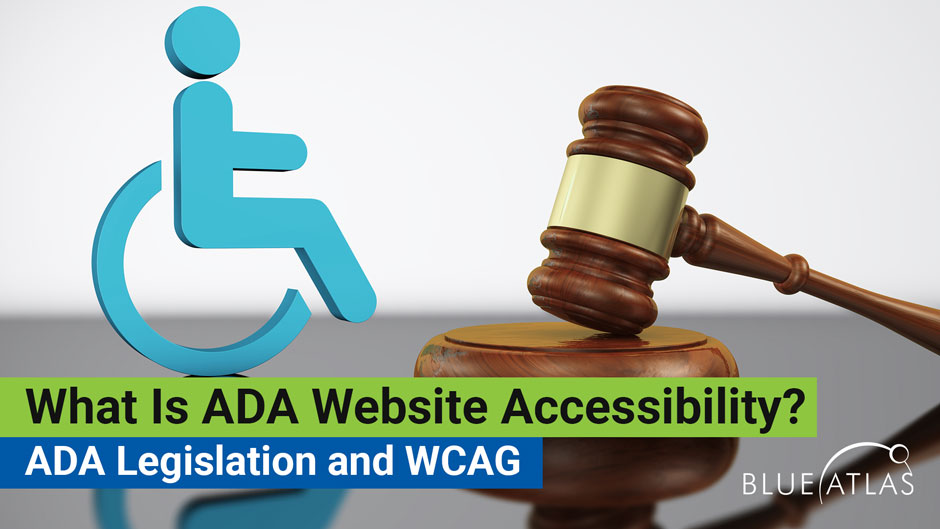What Makes Web Design Accessible?

It’s taken years, but web accessibility has found firm legal ground, thanks to a growing number of lawsuit settlements, and new instruction from the Department of Justice. Let’s sum it up: Important laws such as the ADA (the Americans with Disabilities Act, which we discuss in more depth here), are now considered to apply to websites as well as physical buildings. That means businesses offering services or selling products on their websites should take steps to make sure those sites are accessible.
“Well, what does that mean?” you may be wondering. This type of compliance can sometimes seem complex, especially when it comes to larger websites. Let’s take a closer look at what we mean.
What Accessibility Means for Web Design
Accessible web design allows individuals with disabilities to be able to use all the website features other users can. When it comes to online content, several senses are involved. We consume a lot of visual information, we frequently listen to audio (such as when watching an embedded video or listening to a podcast on a site), and we use our hands and fingers to navigate the site, fill out web forms, follow links, and so on.
Individuals with disabilities may struggle with these actions. Those who cannot see or cannot distinguish low-contrast colors may not be able to process any visual information. Those with hearing problems may not be able to hear audio. People with limited mobility or nerve damage may not be able to use a mouse or keyboard like others can. And so on.
Accessibility simply means designing a website so that individuals with disabilities – and the assistive technology they use on the internet – don’t have any problems using the site.
Consulting the WCAG
Where are the rules for web design accessibility? Fortunately, we have an excellent standard that any website can use: The WCAG, or Web Content Accessibility Guidelines, a global standard that shows exactly what a website should be able to do.
The WCAG, currently on version 2.2, is periodically updated to keep up with technology. It’s divided into four “pillars” of web design, called Perceivable, Operable, Understandable, and Robust. Every pillar is further divided into three levels of compliance depending on how strict the compliance needs to be. We talk a lot more about it here.
Examples of Accessible Design Requirements
- Websites should be designed so that users only using a keyboard can navigate to all website elements, use buttons and links, and quickly access the menu.
- Websites should be coded so that screen readers can read out text in a logical order, and should include tags so screen readers can correctly describe images, web forms, buttons, etc.
- Website colors should be chosen for high contrast and easy visibility.
- Web text should be structured logically, with consistent header use, clear language, and spacing that allows for the use of magnification, etc.

Find the Right Accessibility Solutions with Blue Atlas
It’s important to note there’s no single “right” way to add accessibility to your web design. Just as web design can vary greatly between sites, so does implementation of accessibility features. If you’re looking for a place to start, Blue Atlas can offer a free website audit, schedule a consultation, and help you make necessary changes!





